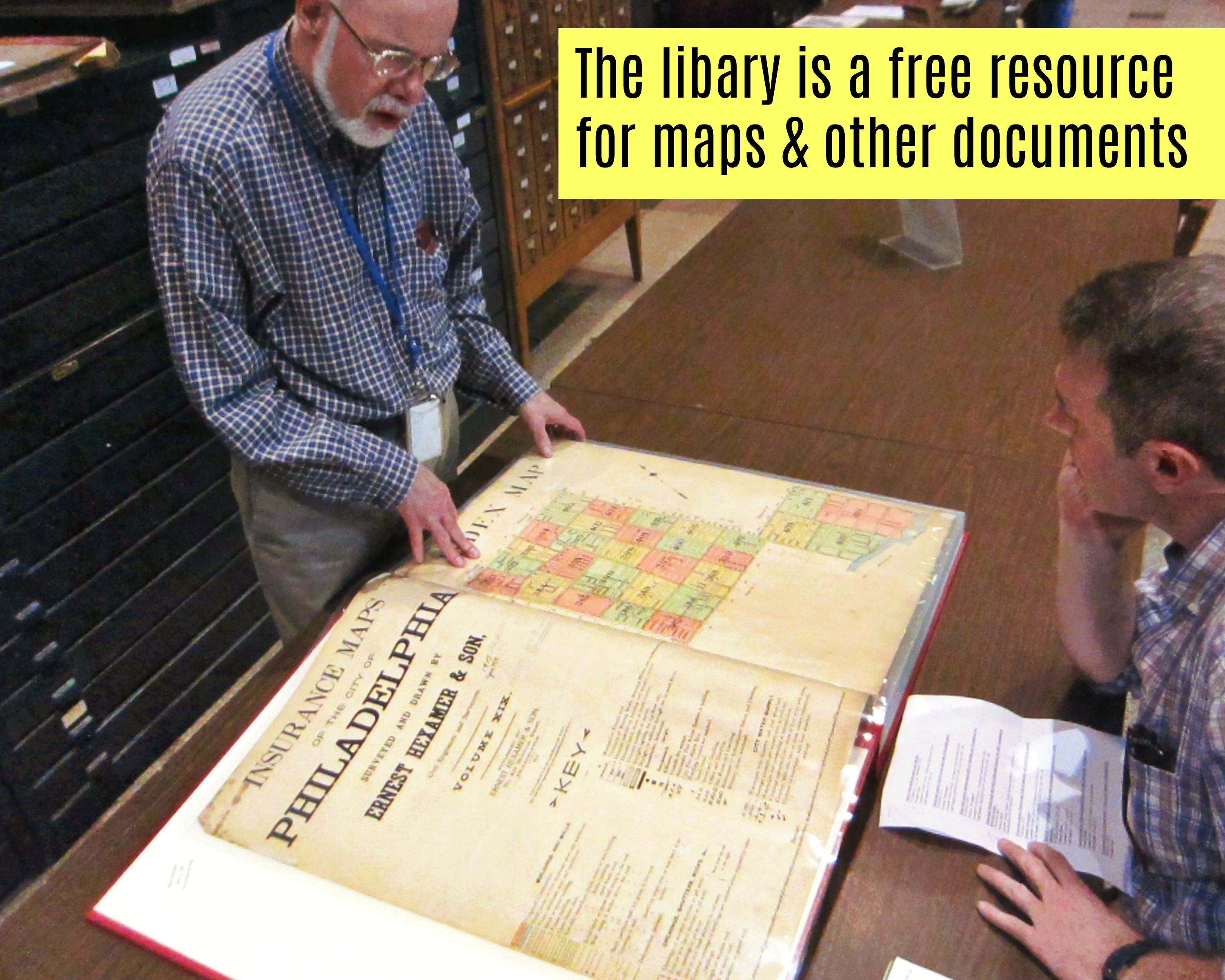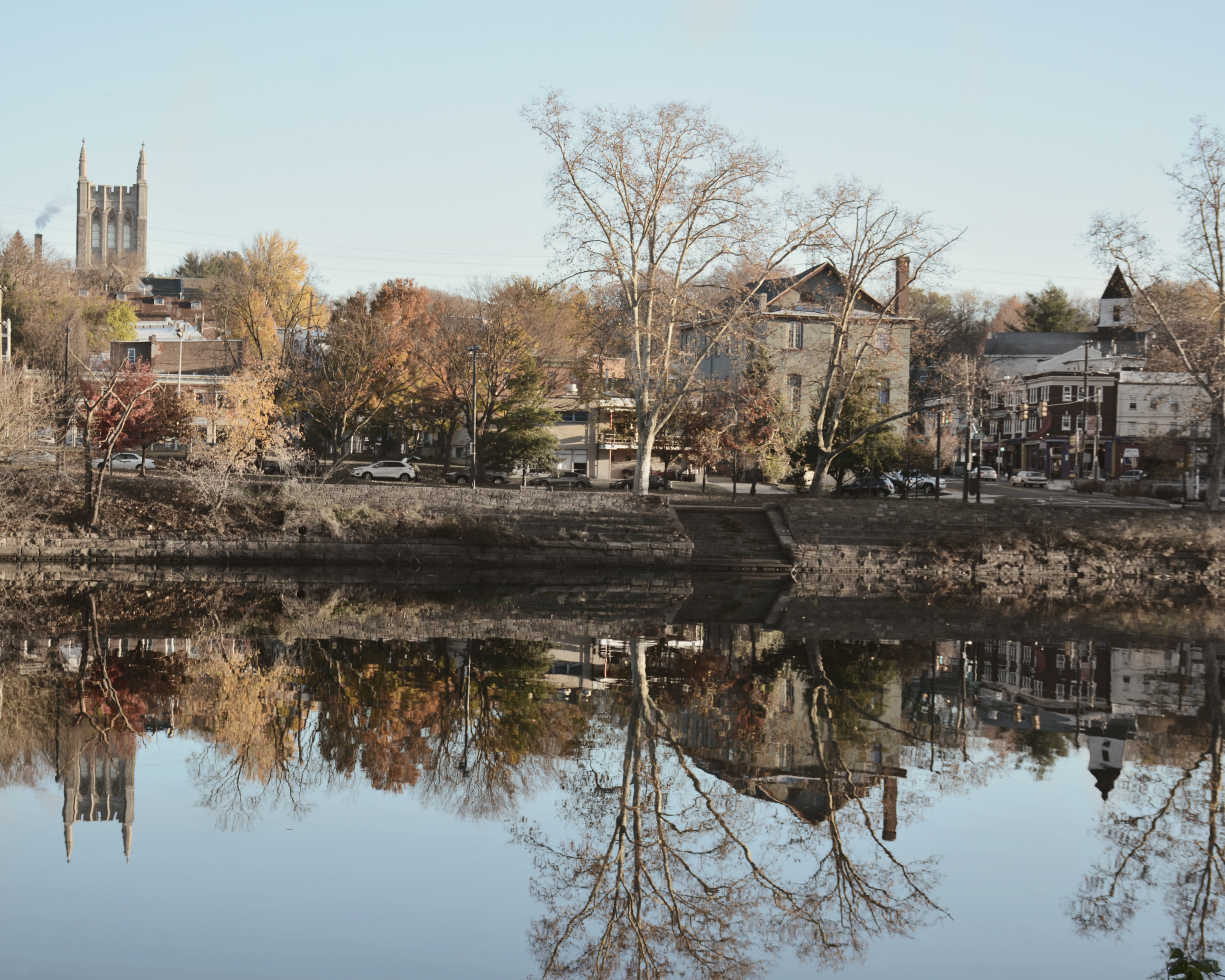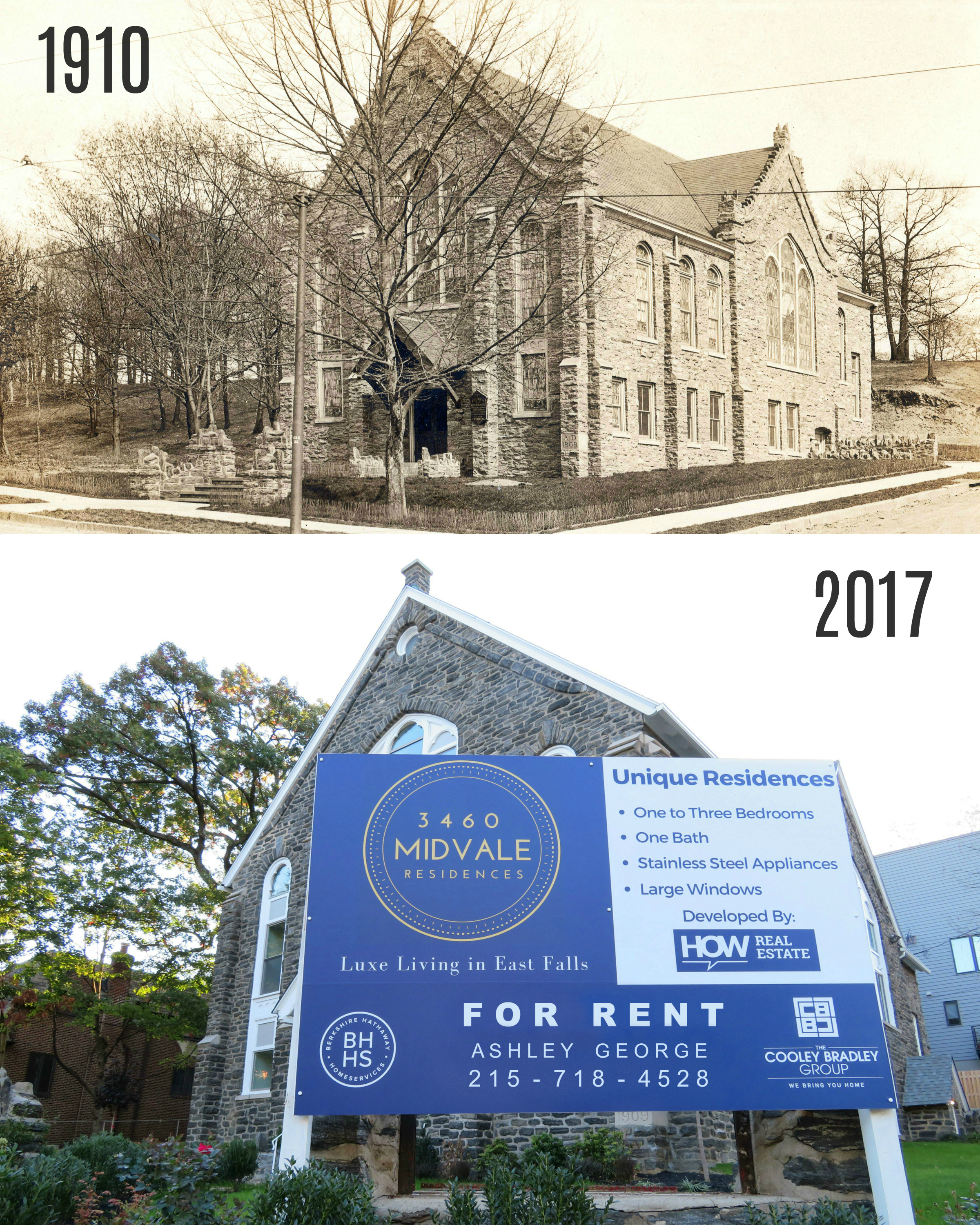If we’re not careful, we can lose our historic architecture. Joseph Minardi explains how we’re at risk, and steps neighbors can take towards preserving our local charm & character.
Look out! Philadelphia is under siege from ravenous developers who’d like to build on every square inch of the city — demolishing historic buildings in their wake. In East Falls, the Catfish Café at Ridge and Scotts Lane) was an exquisite example of Philadelphia Victorian commercial architecture. So close to a revival, only to be smashed to bits, its incredible vintage wooden bar carted off to D.C.
No buildings are safe, not even churches. St. Bridget (3667 Midvale), for instance, has no historical designation and plus is incorrectly zoned as residential. If the Church sold it, a developer could do whatever they wanted with the property. Gut it, demo it, whatever, by right. No need for community input. Are we really OK with this?
Let the heart-breaking loss of the Catfish Café serve as a rallying cry to Save Our Structures. To work to hold onto the remaining architectural treasures in our landscape.
No hating on Development – neighborhoods of course can’t stand frozen in time. And not every house that’s historic is worth preserving. But we can all agree on significant architecture we all recognize as part of the scenery here: St. Bridget’s spires in the skyline. The Baptist Church’s steeple. The blocky green Mason’s building at Ridge and Midvale (btw, have you seen that roof lately?).
The city has a treasure trove of architectural splendor, but only an insignificant percentage is protected from demolition, with a huge concentration in Center City, where a number of big cases have made the news. From Jewelers Row to University City and over to East Falls – no matter where you are, it’s a long and uphill fight to save historic buildings. Philly’s building code is maddeningly arcane, and developers’ lawyers are adept at working “hardship” defenses to sidestep restrictions whenever possible.

But there’s hope! Any armchair preservationist can be a hero for history. With some time and sleuthing, the results can last forever. The Philadelphia Historical Commission’s website provides a step-by-step guide of the process from nomination to designation on the city’s Register of Historic Places, which offers the gold standard in protection (unlike National designation, which only means Federal funds can’t be used to demo it).
The first step in preservation is targeting exceptional buildings with the Commission’s list of ten criteria for designation, which seeks architectural character and also cultural or stylistic importance. Whether famous events have occurred there, or where famous people lived or visited. Any noteworthy names who built or designed it. (You get the idea.)
Next, target the most vulnerable. The ones with exceptional architecture that have been vacant for awhile, or where businesses seem to come and go. Cool buildings that seem unloved or not living up to their potential. The Mason’s building, I think, is a great example in East Falls. Once you’ve identified your goal, it’s time to gather proof for all your criteria.
The Commission’s website provides links to great sources to help you track down all the records and documents you’ll need, plus information on advocacy groups and public review meetings. There are even tax credits and other incentives for individuals and communities who endeavor to save our past.
No need to be a “Lone Ranger” in your crusade. Having friends and neighbors pitch ideas and participate in the process makes it more enjoyable and helps lighten the load, too. What a great opportunity to work together towards a positive goal for the common good.
Why stop at one building? Recently, a religious studies professor at Penn managed to successfully nominate his block of 42nd Street to create a micro-district in West Philly – just 8 houses. You could target a group of buildings here, like all the neighborhood’s churches, or perhaps by builder or architecture style (eg: East Falls’ 35 “Wendell & Smith” homes)?
In addition to historical designation, another way a community preserves its architectural heritage is adaptive reuse of old buildings. A great example of that is the Church of the Redeemer (1909) at the corner of Midvale and Cresson. Recently converted into apartments, this former Lutheran church is an important survivor of East Falls’ early development phase. This strategy has proven success with other historic houses of worship, warehouses, factories, restaurants, etc.
Other actions for concerned citizens are:
- Attend public zoning meetings, where developers often request variances before demolitions.
- Sign up for Citizens Planning Institute classes to learn about zoning, development, and planning.
- Ask your historical society what they’re doing to protect local architecture — then ask them how you can help.
- Participate in your local Registered Community Organizations, like East Falls Forward which sounded the warning bell for Catfish two years ago. (eastfallsforward.org)
Concerned about the state of East Falls’ architecture?
RESCHEDULED! Local historian Joseph Minardi will be at Falls of Schuykill Library on Wednesday February 28th with an inspiring presentation on Philadelphia’s most dynamic period of residential growth, 1890 to 1920. Much of East Falls’ loveliest buildings came out of these two decades, which Joe will highlight with images from his private collection, soon to be published in his fourth book, “City of Neighborhoods.” After examining the past, we’ll look forward to the future to see what can be done to save our city’s architectural legacy.
See you at the library starting at 6:30 for an entertaining and thoughtful evening (plus snacks!).
Follow Joe on Facebook for great pics & info.







Roxborough received it’s first fast food restaurant at the corner or Roxborough Ave. and Ridge.
A gorgeous large stone building converted into apartments formerly stood at that corner. A developer bought the property and promptly tore down the building and put it on the market. I was surprised to find out that the developer was a local resident.
Despite a well attended and strong anti Wendy’s campaign, Wendy’s got everything that they wanted. I attended every meeting once I heard of Wendy’s proposal.
It’s my contention that the City’s 10 year RE Tax Abatement program encourages tear downs and residential construction and that the tax savings don’t actually end up in the hands of the new homeowners but in the pockets of the developers.
Since a homeowner’s qualification for a mortgage is based on how much of a monthly payment can be afforded (and that monthly payment comprises insurance, interest, principal, and taxes) without taxes in the equation the principal can be higher and therefore the applicant can afford a developer’s inflated asking price.
This may be a flawed assumption but it may have some merit. I’d like to see the abatement repealed.